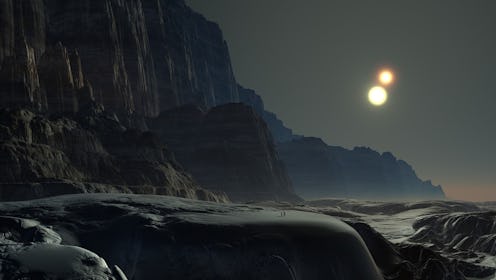Life
Everything You Need To Know About Proxima B

Every discovery of something bizarre happening in outer space brings with it a whole new world of possibilities — quite literally. In fact, science has found another world — or something world-like, at least. So what is Proxima B, exactly, and why are we all so excited about it? Even if we can't get to it yet, it's big news. Here's what we know so far.
Toward the end of August, a team from the European Southern Observatory announced the discovery of Proxima B: The first exoplanet we've ever seen orbiting Proxima Centauri, the star nearest Earth, at 4.2 light years away. Proxima B is roughly an Earth-sized planet, just a mere 10 percent larger in diameter than Earth is. It's not the discovery itself that is so remarkable, though; in fact, we find planets orbiting other stars quite frequently. There are nearly 3,000 planets orbiting other stars that we're already aware of, plus another 2,500 potentials. It's the fact that Planet B is so similar in size to Earth, and also the fact that it orbits Proxima Centauri within the star's habitable zone.
The habitable zone refers to the distance from a star that still has the appropriate temperature for liquid water to exist. If you're too close to the sun, water will boil; and if you're too far from the sun, it'll freeze.
Proxima B is right in that cozy spot in between, orbiting at a distance where liquid water is possible. And as you're probably aware, if there's water, there can be life.
Not only do we think there's water on Proxima B, but research shows that it might in fact be an ocean planet like Earth. In B's case, though, one study published in Astrophysical Journal Letters found evidence suggesting that oceans might be covering the entire surface of Proxima B.
All of this research has brought up countless other questions regarding the possible similarities between Proxima B and Earth: Could it have a similar atmosphere? The same elements? Intelligent life?
While it's surely exciting to think about life on another planet, scientists stress that they only know three things with certainty: Proxima B's distance from its sun, its orbital period, and its minimum mass. At this point, most other things are up for debate, including just how earth-like the planet is; and research is quick to point out that there are some stark differences between Proxima B and Earth.
For example, there's a chance that one side of Proxima B has no day. Because its star is a red dwarf star, it's smaller and dimmer than our own sun.
For this reason, a planet needs to be much closer to receive warmth, which equals stronger tidal forces. These forces could essentially "lock" the planet to the star, meaning that the hemispheres don't change: The same hemisphere always faces the star, and the other always faces away. More recent research has found that wind could help distribute the warmth, but it's a discussion still being had.
A lot of it comes down to Proxima Centauri, since we know how much a star can affect the conditions of its orbiting planets. Look at the sun and earth. The sun has played a huge part in the history of our evolution. The fact that Proxima Centauri is so different from our sun means that if there's life on Proxima B, it could be very different from what we know.
While Proxima B is still clouded in mystery, it goes without saying that this discovery will occupy scientists and researchers (and the rest of us) for decades to come.
Image: DasWortgewand/Pixabay